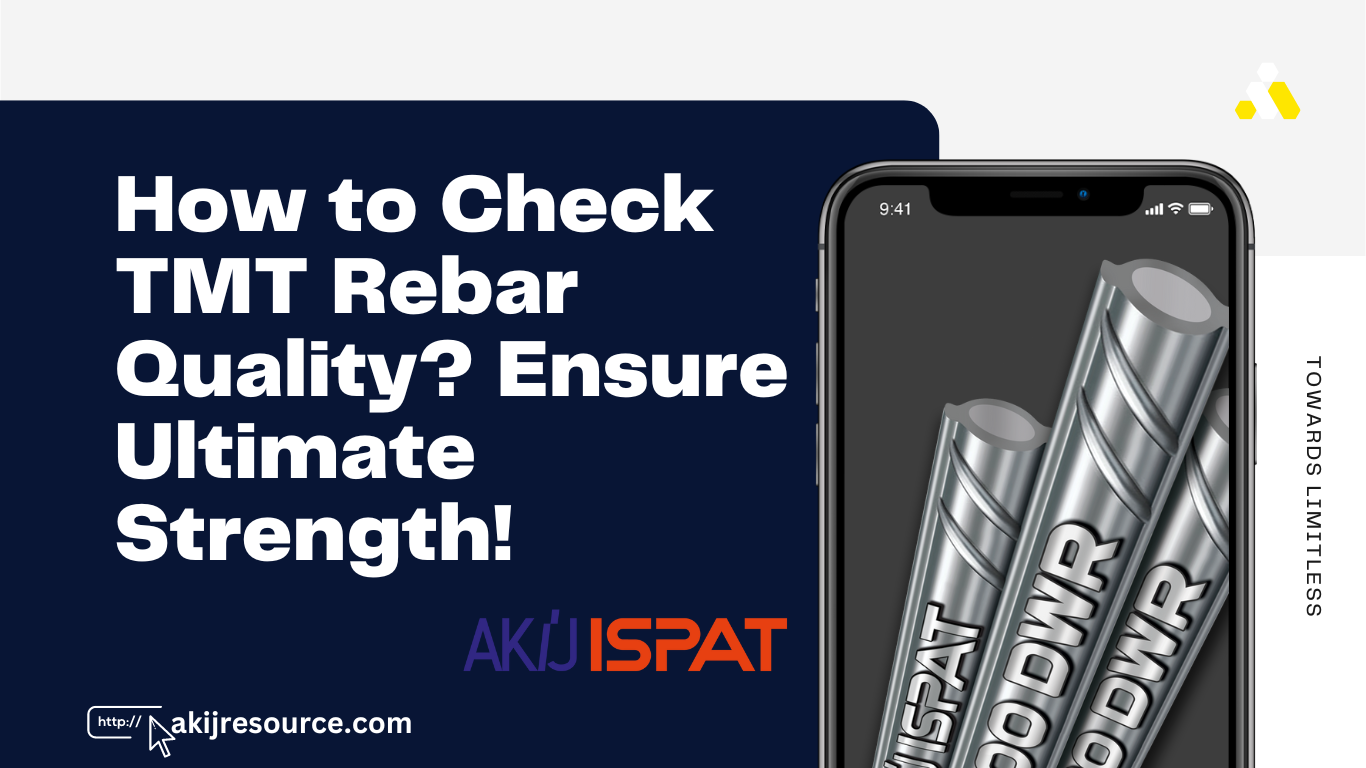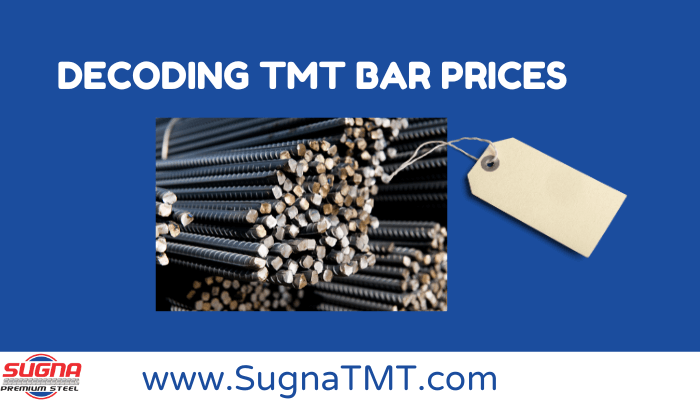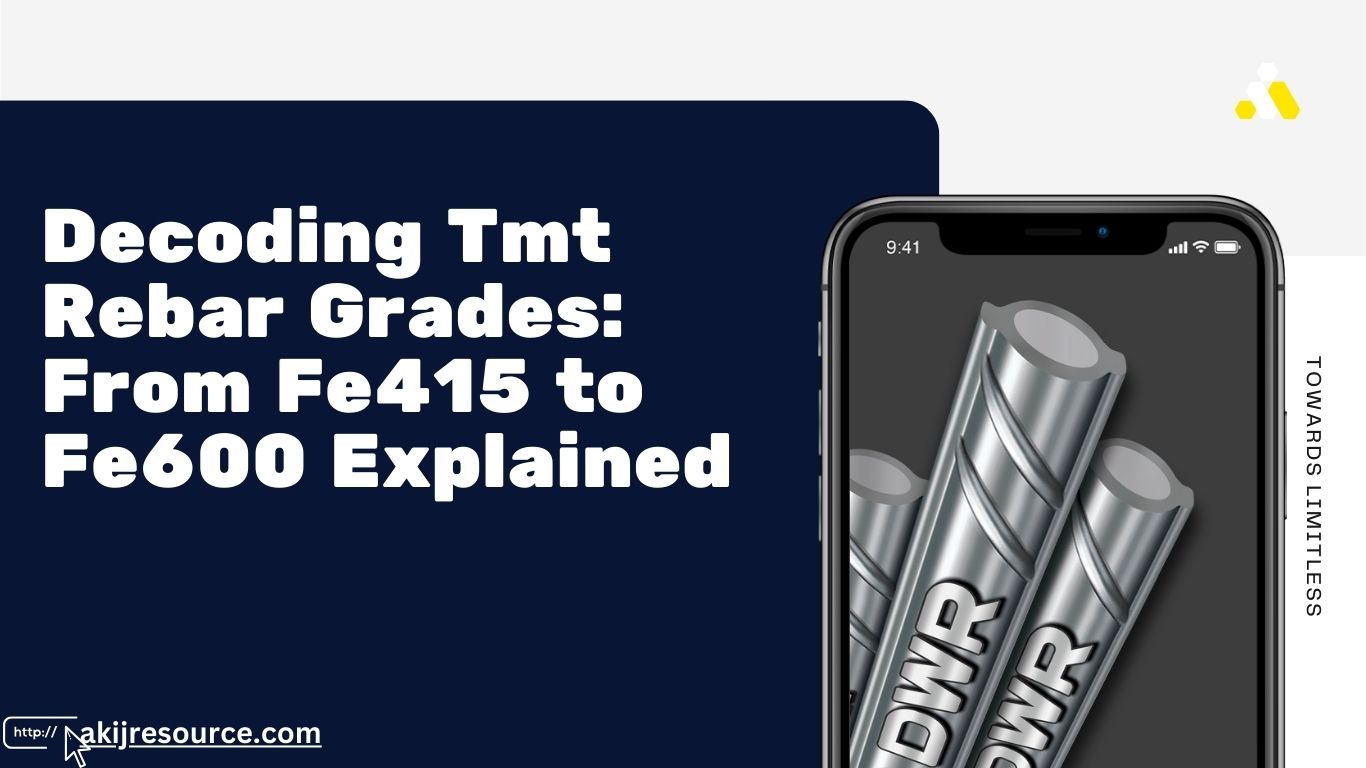TMT Rebars are crucial for construction. They provide strength and durability.
Understanding TMT Rebar grades can seem complex. But it’s essential for choosing the right material for your project. These grades, from Fe415 to Fe600, indicate the strength of the steel. Higher numbers mean stronger steel. Knowing the differences helps in making informed choices for safe and sturdy buildings.
This guide will break down each grade, making it easy to understand. We’ll explain what each number means and where it’s best used. Let’s simplify the world of TMT Rebar grades together.
Introduction To Tmt Rebars
Understanding TMT rebars is crucial for anyone involved in construction. TMT, or Thermo-Mechanically Treated rebars, are essential elements in modern construction. They offer strength and durability to structures. These bars come in various grades, each serving different purposes. Let’s dive into what makes TMT rebars so significant.
Significance In Construction
TMT rebars play a vital role in construction projects. They enhance the tensile strength of concrete. This results in safer and more resilient structures. TMT rebars are used in the construction of buildings, bridges, and other infrastructure. Their superior strength helps in withstanding natural forces like earthquakes and cyclones.
Builders prefer TMT rebars for their excellent bonding properties. This ensures the longevity of the structure. The use of TMT rebars also reduces the overall cost of maintenance. They offer better bendability, making them easier to work with on-site. Their corrosion resistance adds to the durability of the construction. These features make TMT rebars indispensable in modern construction.
Basic Composition
The composition of TMT rebars is a blend of different materials. They primarily consist of low-carbon steel. This makes them flexible and easy to weld. The bars undergo a rapid cooling process, which forms a hard outer layer. This layer gives the rebar its high strength.
The inner core remains soft and ductile. This unique structure offers excellent tensile strength. It also provides flexibility, which is essential during earthquakes. The blend of materials used in TMT rebars ensures they meet various construction needs. Understanding their composition helps in choosing the right grade for specific projects.

Credit: akijresource.com
Understanding Rebar Grades
Rebar, or reinforcing bar, is a critical component in construction. It strengthens concrete structures. But not all rebar is the same. Different grades of rebar exist. These grades determine the strength and flexibility of the rebar. Understanding these grades is crucial for any construction project.
What Are Rebar Grades?
Rebar grades indicate the strength of the steel. They are measured in megapascals (MPa). Each grade has a different yield strength. Common grades include Fe415, Fe500, and Fe600. Fe415 has a yield strength of 415 MPa. Fe500 and Fe600 have higher strengths. The higher the number, the stronger the rebar.
Why Grades Matter
Choosing the right rebar grade is essential. It affects the durability of the structure. Higher grades offer more strength. They are suitable for heavy-duty constructions. Lower grades are used for lighter structures. Using the correct grade ensures safety and longevity. It also affects the cost of the project.
Fe415 Rebar
Fe415 Rebar is a commonly used grade of Thermo-Mechanically Treated (TMT) rebar in construction. It offers a good balance of strength and ductility, making it suitable for a variety of structural applications. Understanding its properties and common uses helps in selecting the right material for your construction needs.
Properties
Fe415 Rebar has a minimum yield strength of 415 N/mm². This makes it strong enough for medium-load structures. It has good elongation, around 14-18%, which means it can stretch without breaking. This rebar type also has high bendability. This allows it to be easily shaped on-site. The carbon content is low, which helps in reducing corrosion. The ribbed surface of Fe415 ensures better bonding with concrete.
Common Uses
Fe415 Rebar is often used in residential buildings. It’s suitable for small to medium-sized commercial structures. You can find it in beams, columns, and slabs. It is also used in bridges, roads, and flyovers. Its flexibility makes it ideal for seismic zones. It supports structures that need to withstand earthquakes. Fe415 is also used in water tanks and other similar structures.
Fe500 Rebar
Fe500 Rebar is one of the most commonly used grades in construction. It offers a balanced mix of strength and flexibility. This makes it suitable for various structural applications. Understanding its properties and advantages is essential for builders and engineers.
Properties
Fe500 Rebar has a yield strength of 500 N/mm². This high strength ensures the rebar can handle significant loads. It also has excellent bendability. This allows easy shaping during construction. The rebar has a high ductility level. This means it can deform without breaking. Its elongation percentage is also noteworthy. It usually ranges around 12-16%. This makes it reliable for earthquake-resistant structures. The rebar’s chemical composition includes carbon, manganese, sulfur, and phosphorus. These elements enhance its overall performance and durability.
Advantages In Construction
Fe500 Rebar offers multiple benefits for construction projects. Its high strength allows for the creation of sturdy structures. This rebar grade can withstand heavy loads. It is ideal for high-rise buildings and bridges. Its good bendability makes the construction process easier. Workers can shape it into required forms without much effort. The high ductility of Fe500 Rebar ensures safety. Structures can endure stress and strain without collapsing. The elongation property also adds to the structural integrity. It helps in maintaining the shape even under pressure. This rebar grade is also corrosion-resistant. It ensures the longevity of the construction. Its chemical composition protects it from rust and other damages. This makes it a cost-effective choice in the long run. Overall, Fe500 Rebar is a reliable option for various construction needs.
Fe550 Rebar
Fe550 Rebar is a high-strength TMT (Thermo Mechanically Treated) bar. It is widely used in construction projects. Its superior properties make it ideal for heavy-duty applications. Engineers and builders prefer Fe550 for its reliability and durability.

Properties
Fe550 Rebar has a minimum yield strength of 550 N/mm². This makes it stronger than Fe415 and Fe500 grades. The tensile strength of Fe550 is also higher. It resists deformation and offers excellent bendability. The elongation percentage is decent, ensuring flexibility. Fe550 bars are corrosion-resistant, which increases their lifespan. They perform well in seismic zones due to their high strength. Their superior properties make them suitable for various structural applications.
Industrial Applications
Fe550 Rebar is used in heavy construction projects. It is ideal for building bridges and flyovers. It supports high-rise buildings and industrial structures. Dams and power plants also use Fe550 for its strength. It is suitable for underwater and marine structures. The bars are used in complex projects where high strength is needed. Engineers trust Fe550 for its performance and reliability.
Fe600 Rebar
The Fe600 rebar is one of the strongest and most durable types of steel rebar. It is commonly used in heavy construction projects. This grade of rebar offers unmatched tensile strength, making it ideal for structures that need to withstand high stress. Let’s delve into its specific properties and benefits.
Properties
Fe600 rebar boasts a high tensile strength of 600 MPa. This makes it one of the toughest rebars available. It shows excellent resistance to wear and tear. The high carbon content in Fe600 ensures better bonding with concrete. This improves the overall stability of the structure. It also has good elongation properties, which help absorb stress during natural calamities.
Benefits In Heavy Construction
Fe600 rebar is perfect for heavy-duty construction projects. Its high strength allows the use of less steel, reducing costs. It enhances the lifespan of the structure by providing better durability. This rebar can handle extreme weather conditions and seismic activities. Its superior bonding with concrete adds to the safety of buildings and bridges. Using Fe600 rebar also means fewer joints, leading to less welding work. This speeds up the construction process significantly.
Comparing Rebar Grades
Decoding TMT rebar grades can be challenging. Understanding the differences between grades like Fe415 and Fe600 helps in choosing the right rebar for your construction needs. This section will provide a clear comparison of these rebar grades, focusing on their strength, ductility, and cost implications.
Strength And Ductility
Fe415 and Fe500 grades offer moderate strength and good ductility. Fe550 and Fe600 provide higher strength but lower ductility. Higher strength rebar is ideal for heavy construction projects. Lower strength rebar suits smaller, less demanding projects.
Cost Implications
Higher grade rebars like Fe550 and Fe600 are more expensive. They require less material due to their higher strength. Lower grades, such as Fe415 and Fe500, are more affordable but may need more quantity. Cost depends on the project’s specific needs and budget constraints.
Choosing The Right Rebar
Choosing the right rebar for your construction project is crucial. The correct grade ensures the structure’s strength and durability. Different grades of TMT rebar suit different needs. Understanding these grades helps in making an informed decision.
Factors To Consider
Several factors influence the choice of TMT rebar. One major factor is the type of structure. Residential buildings might need different rebar grades than commercial buildings. The load the structure will bear also plays a significant role.
The environmental conditions matter too. Coastal areas may require rebar with high corrosion resistance. The budget is another crucial factor. Higher grades often come with a higher price tag. Yet, they might save money in the long run.
Expert Recommendations
Experts suggest using higher grades like Fe500 for large projects. Fe600 is ideal for high-rise buildings and heavy structures. For smaller projects, Fe415 or Fe500 can be sufficient. Consult with a structural engineer for the best advice.
Engineers often recommend Fe550 for bridges and flyovers. This grade offers better tensile strength. Fe415 is more suitable for residential buildings. It provides adequate strength and flexibility.
Using the right grade ensures safety and longevity. Always prioritize quality over cost. A well-chosen rebar grade can prevent future complications.
Future Trends In Tmt Rebars
The construction industry is evolving rapidly, and TMT rebars are no exception. Future trends in TMT rebars focus on enhancing strength, durability, and sustainability. These advancements aim to meet the growing demands for safer and more eco-friendly construction materials.
Innovations In Material Science
Material scientists are exploring new alloys and composites for TMT rebars. These innovations promise higher strength and better resistance to corrosion. Researchers are also experimenting with nano-materials. These tiny particles can significantly improve the properties of steel. The goal is to create TMT rebars that are lighter yet stronger.
Advanced manufacturing techniques are another area of focus. Technologies like 3D printing and laser treatments are making waves. These methods ensure precise control over the rebar’s structure. This leads to better performance and longer lifespan.
Sustainability Aspects
Sustainability is a major concern in today’s world. The steel industry is no different. Future trends in TMT rebars include the use of recycled materials. This reduces the environmental impact of production. Green manufacturing processes are also gaining traction. These methods aim to cut down on carbon emissions.
Energy-efficient production techniques are being developed. These methods consume less energy and produce less waste. The goal is to create TMT rebars that are not only strong but also eco-friendly. This aligns with global efforts to combat climate change.

Credit: sugnatmt.com
Frequently Asked Questions
What Are Tmt Rebar Grades?
TMT rebar grades indicate the strength and ductility of the steel bars. They range from Fe415 to Fe600. Higher numbers mean higher strength.
Why Choose Fe415 Rebar?
Fe415 rebar offers a good balance of strength and ductility. It’s ideal for residential buildings and small structures.
What Is Fe500 Rebar Used For?
Fe500 rebar is used for commercial buildings and infrastructure projects. It provides higher strength than Fe415, suitable for heavy loads.
How Strong Is Fe600 Rebar?
Fe600 rebar is the strongest among TMT grades. It’s used in specialized construction projects requiring maximum strength and durability.
Conclusion
Understanding TMT rebar grades is crucial for construction success. From Fe415 to Fe600, each grade offers unique strengths and benefits. Choosing the right grade ensures safety and durability. By knowing these differences, you can make better decisions. Strong, reliable structures depend on the right TMT rebar.
Always consider your project’s specific needs. This knowledge helps build safer, longer-lasting buildings. Keep learning and stay informed for optimal results.








